A multifaceted author whose interests range from film criticism to fiction to non-fiction dedicated to alternative realities, Danilo Arona has become the singer of a particular and very personal declination of horror and weird that has its roots in the Italian context. In his essay "Media Possession", Arona wonders if it is possible that certain media, especially audiovisual ones, are capable of provoking in predisposed subjects a temporary cancellation of conscience whose place is taken by "something else", in a nutshell what in other places, times and cultures would have been called possession.
di Francesco Cerofolini
It is commonly believed that the horror and weird imagery do not have citizenship with the Italian popular culture. Despite the numerous cinematographic and comics works that have become cult even beyond national borders, detractors reduce all this to a mere imitation of Anglo-Saxon brand models, products that are the children of an xenophilic tendency rather than of an indigenous culture. This vulgate has been heavily questioned in recent years, a process that culminated in the publication of Popular Horror Almanac, Edited by Fabio Camilletti e Fabrizio Foni.
Through the essays presented in this volume, Camilletti and Foni demonstrate that in Italian culture there is a sensitivity to the horror, the macabre and the supernatural that they baptize "Popular Horror", and also that this current has crossed the peninsula's culture like a karst river for centuries. Popular Horror, similarly to British folk-horror, lives in the intersection of works of fiction, foklore, myths and legends as ancient as they are modern. If it is necessary to find in contemporary Italian literature an author who has drawn heavily on Popular Horror, that is certainly it Daniel Arona: an author who in his more than thirty-year career has opened an Italian path to horror and that Camilletti and Foni themselves cite as an example of Popular Horror in the introduction to their volume.

Multifaceted author whose interests range from film criticism from fiction to non-fiction dedicated to the vein of alternative realities, Danilo Arona has become a singer of a particular and very personal declination of horror and weird that has its roots in the Italian context. He was born in 1950 in Alessandria, a city that will be the preferred setting for his novels, a city that Arona himself describes as follows: "Alexandria it's not black, it's gray. A splendid color to set my stories. It is gray with the mists, with the many unsolved crimes, with the character of the Alexandrians". As a child he became very passionate about horror and thriller genres, thanks to an aunt who took him to see this type of film. The young Arona devours tales of terror in popular magazines of those years such as Tales of Dracula and then move on to the classics such as Edgar Allan Poe, HP Lovecraft, Richard Matheson e The exorcist di William Peter Blatty, while not disdaining science fiction, with novels that he himself defines "Fantastic daily" like The children of the invasion, The possessed e Il day of the Trifids.
During his youth Danilo Arona cultivated his other great passion, the music, militating in the rock group of Privilege as a guitarist. A passion, that for rock and blues music, which will often intersect with his literary production because, as he explains in an interview: "First of all, except for special occasions, music is played at night. And night is the real link between the music - it goes without saying, a certain rock, the blues - and writing, especially when referring to those genres that can naturally "contain" it such as thriller, horror and noir. And then the music opens certain doors, it has been known since the days of the Doors».
In the same period Arona begins to write for some fanzines dedicated to science fiction such as Kronos, where he deals with film reviews and publishes some of his early short stories. Thanks to the work on the fanzines he gets noticed by Victor Curtoni who hires him for his historic science fiction magazine Robot, for which Arona writes one of the first Italian studies on the cinema of John Carpenter experiences that will culminate in his debut book, Guide to Fantacinema. In 1984 he made his debut in fiction at a professional level with the story Sam Hain's music, contained in the anthology of rock fiction The broken heart hotel. Since then Danilo Arona has published over forty titles including essays and novels. This article does not want to and cannot review all of his vast production, but will focus on his non-fiction production and his luckiest narrative creation, that is Melissa, the ghost of Bologna-Padua, trying at the same time to highlight the recurring themes and ideas in his work.

Anthropology of Horror
In his essays Danilo Arona deals with issues that we could define as “borderline”, belonging to that "Twilight zone" in which paranormal, alternative realities and obscure news cases converge. A completely complementary production to the fictional one, since it presents ideas and themes in a so to speak rough form that will then be reworked by the author in his fictional works. In 1994 his first essay of this kind was published, All Stories. Italian Imaginary and Contemporary Legends. Moving in the footsteps of the seminal works of Jan Harold Brunvand, Arona compiles an anthology of the most widespread urban legends in Italy in the first half of the nineties. Arona identifies in the contemporary city the incubator of nightmares and modern neuroses, a breeding broth from which new and phantasmatic bogeys arise:
« Thus, born to make man free and reject out of his structure rich in positive symbolic values both enemies and diseases, and the larvae of ancient demons, the modern city starts with dazzling speed to overturn its meanings and assume the face of a nightmare within which profound mythical figures present themselves with new forms and archaic meanings. At the same time it is determined the splitting of the legendary into metropolitan and extra-metropolitan, the latter more linked to antiquity and more steeped in folklore. Nowadays, history does not change. Cities swallow their weakest protagonists and tell dark legends, perfect plots beyond horror and encroaching on ultra-modern splatterpunk, but at the same time Gothic reminiscences of past centuries that are intertwined with the subliminal rhythm of video clips and multimedia disciplines: gigantic mice, black panthers, killer babysitters, fruit poisoners, AIDS propagators, satanic cults, human sacrifices, urban cannibals, haunted houses and ghost hitchhikers. »
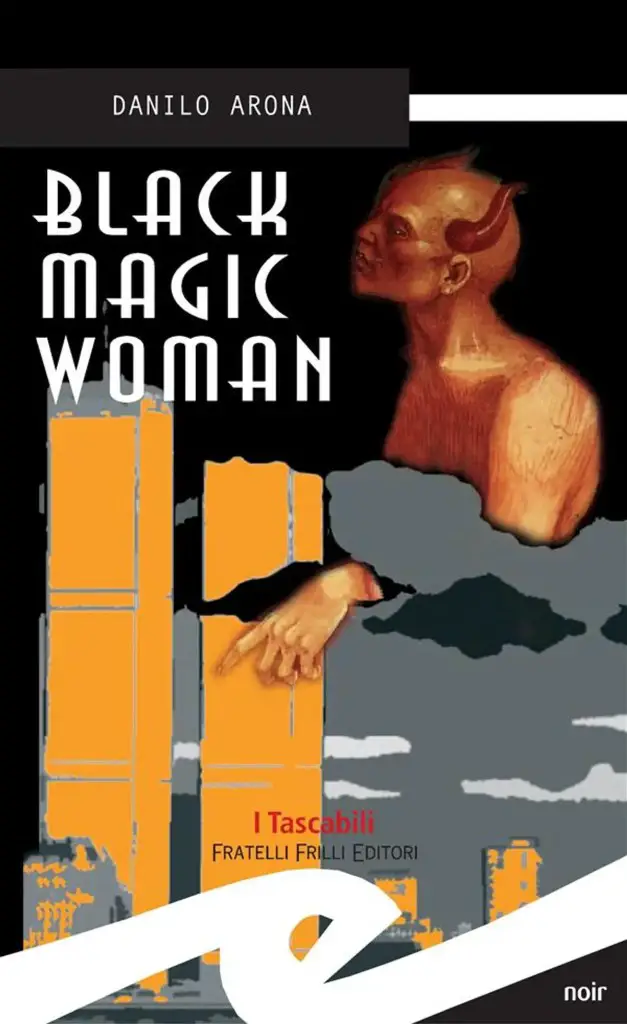
Indeed, one of the essay's happiest insights is precisely that of making a distinction between urban and extra-urban legends. While urban legends embody the anxieties and fears associated with contemporaneity, extra-urban legends remain models and figures typical of rural folklore:
« The need to divide the legendary Italian sector into "urban" and "extra-urban" corresponds in fact to that split of the fantastic, which we mentioned above, which occurred with the birth of the modern city: a dualism that sees in contemporary Italian legend the metabolization of Anglo-Saxon and American archetypes fused with several original nuclei of our most genuine folklore. A dichotomy on which the great transformation that took place in Italian society since the second post-war period certainly weighed: the progressive abandonment of the countryside, the recycling of a fairy-tale and peasant universe in an industrial and rational system, the renunciation of embarrassing mythical presences, more or less supernatural and typical of a rural culture, such as gnomes, elves, "wandering lights" and ghosts of various kinds. Even if a clear distinction will not always be easy, it can be said that in Italy, in the urban legend American narrative models live, clearly visible and verifiable, while the extra-urban one exhibits much more solid links with the national folkloric fabric. »
From this mixture of contemporary American imagery and archaic Italian folklore Arona will draw heavily for her novels. Especially with regard to Melissa, variation on the theme of one of the most famous urban legends of all time, that of the ghost hitchhiker. Another very interesting idea is set out at the very beginning of the book. The author wonders if certain stories or legends can "grow" to the point of acquiring a kind of concreteness, a tangible form in reality. To explain this idea, Arona uses an Andean legend:
« An ancient Andean legend it tells of a man who, passing through a mule track, is seen tearing his hat by the fury of the wind. The man tries to retrieve it for a while, but the wind is very strong and the headgear constantly changes direction, jumping now here now there, so in the end the man gives up and goes away. After an hour on the same path, a second man passes by who, seeing his hat jumping in all directions due to the wind, runs away to the village down the valley and tells everyone about an evil spirit who on the mule track takes the shape of a hat for terrify travelers. After a week the hat really starts to chase the people who pass by that street, as the collective fear of the villagers has had the effect of materializing the event, the object of so much fear. A precise metaphor of legends that from time to time manage to turn into reality, this ancient and ever-present myth finds precise confirmation both in psychoanalysis and in psycho-somatic medicine: in that mule track such a powerful thought-form has been created that the feared event has actually occurred. »

The idea of a thought-form that once it reaches a critical mass of psychic energy takes on an existence and a will of its own it will become, as we will see, one of the central ideas in Arona's narrative. Four years later Arona returns to non-fiction writing the volume Media possession. The book investigates the possibility that modern media can induce aberrant or criminal behavior in some users, investigating the most famous examples such as the chain of suicides that would have been inspired by the publication of The pains of young Werther, passing through the wave of panic caused by the radio broadcast de War of the Worlds di Orson Welles, up to the countless cases of murderers who claim to have been inspired by films, books or music for their bloody deeds. In the background there is a reality that seems to be increasingly on the verge of being swallowed up by its media representation:
« In recent times, some sensational news events have insinuated the doubt that contemporary reality is becoming so mysterious and so malignant, and at the same time so "spectacular", that it is now required an anthropological analysis of legend or fiction. An idea that is anything but daring, especially if we think of the now objective existence of that no man's land, where the real and the unreal are confused and interpenetrated, producing a reality that, like the virtual one of technological origin, is in any case "true" for the subjects who experience it. »
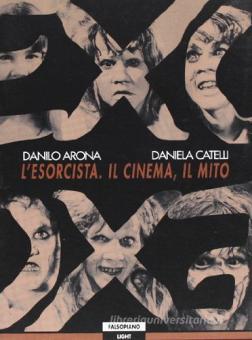
In her essay, Arona wonders if it is possible that certain media, especially audiovisual ones, are capable of provoking in predisposed subjects a temporary annihilation of consciousness whose place is taken by "something else", in short, what in other places, times and cultures would have been called possession. A phenomenon that for some decades has been known to psychiatrists as "Cinema neurosis", a phenomenon observed after the film's release in American cinemas The exorcist, as a result of which many people began to believe that they were indeed possessed by the devil. In this regard Arona coins the definition of film disturbing, or those films that seem capable of exercising a strange power over certain viewers.
«In recent decades, several films, some of which unquestionably horror, have been at the center of controversy because they would have provoked an alleged disturbing "sociopathy""; film can activate one altered state of consciousness and to lead individuals without the necessary antibodies to the dark side of consciousness. Or in some cases, even able to modify even "in the skin" that I (the other) disturbed. Although, as Arona himself points out, it is difficult and risky to trace a cause and effect relationship between certain films and certain criminal conducts, it is also true that there is a relationship, still not well focused, between human behavior and the media bombardment to which modern man is subjected daily: "But if there is no proof that cinema is the real cause of these phenomena, nevertheless there is a complex relationship, for now unclear, between the horrors of art and those of life. And, while uncertainty about the nature of this relationship persists, its effects materialize in fear". Read today the book may appear dated, but the reflections contained in it are perhaps more relevant today, in the age of the web, Youtube and the ubiquitous eye of smartphones than they were in 1998.
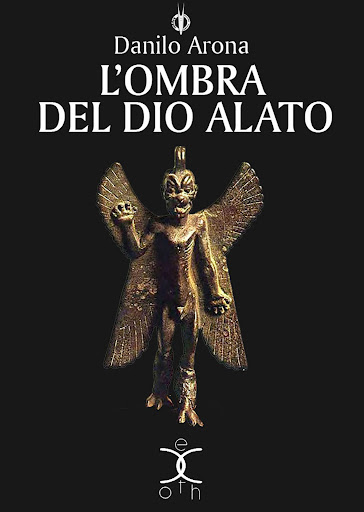
The wise The Shadow of the Winged God it is the one most attributable to the trend of Alternative Realities. In this book Arona investigates the figure of Pazuzu, the monstrous demon of the Mesopotamian pantheon "King of the perfidious spirits of the air", who after having terrorized the inhabitants of the fertile crescent for centuries has known a renewed fame in the seventies of the twentieth century for being the devil who owns little Regan, in novel The exorcist and then in the film of the same name. Arona starts from the mythological roots of the character but soon enters the realm of alternative reality, in an erudite dissertation that passes from fanta-archeology to Zecharia Sitchin up to paraphysical theory proposed by "heterodox" ufologists such as John A. Keel and Jacques Vallée. The theme of the media as vectors of possession and also the suggestion that certain thought-forms can materialize under particular conditions. The latter concept finds its foundation in the Western esoteric tradition, that is, in what they are called egregori. Arona brings them up to try to explain the sightings of creatures similar to Pazuzu, one above all the Mothman, reported several times throughout history:
« Far more interesting to us is its occult significance [of the word "egregore", ed], because it refers to a fictitious being, constituted thanks to the accumulation of psychic charges of a group of people. According to certain theories, which, however, have confirmation in the scientific field, if more people get together and emit vibrations of a homogeneous type, a being can come to life that will be good or evil depending on the type of thought emitted. At first weak and inclined to dissolve, the Eggregore acquires more and more its vital independence and greater powers, as the meetings of those who presided at his birth thicken. They live in the space around us, and are made up of an invisible part but also, at times, of organic parts that can become visible. Can an Eggregoro have anything to do with Pazuzu (and with hybrids more generally), materialize it? Make it visible again even for a short time in our reality? »

Melissa, or the ghost of the time
its technical reproducibility
Arona's fiction is far from the classic stylistic features of horror literature; she often moves away from it, hybridizing with non-fiction and reportage, in a refined play of reality and fiction in which it is often difficult to say where the author's research ends and his volcanic fantasy begins. Arona's novels have as their favorite (but certainly not the only) scenario Italian province, which under the apparent tranquility, seethes with horrors and has many to tell terrifying stories. As the narrator, alter ego of Danilo Arona himself, writes in the incipit of Chronicles of Bassavilla:
« I write books, articles, make inquiries: I aspire to be the freelance of occultism, the Fox Mulder of provincial journalism. It's not easy, but I can live with it. Also thanks to Bassavilla, as I said. No, I correct myself: mainly thanks to him. Apparently Bassavilla seems to be the dirty and neglected province that created the mythology that is still feeding on certain chronicles and certain literature called “noir”. But here, if you know how to get your hands on it, it's Area 51: skeletons in the closet, monsters under the house. Disturbing stories, often unknown, which do not conquer the dignity of national news, because many times there are those who want them confined in the fort of reputation and of the image to be saved. Plot of admirable perfection. More than once I have been accused of making them up. »
Center of the narrative universe of Arona is precisely the city of Bassavilla, a literary double of the birthplace of the author, Alexandria. Built on a leyline, Bassavilla is a border town between ours and other worlds. Here the coincidences linked by the synchronicity principle follow one another at an alarming frequency, here many inhabitants are born with a second view and above all women, they have omens of impending disasters or they see the dead. Often shrouded in fog, Bassavilla is a pole of attraction for entities of all kinds. One of these entities is Melissa, the ghost of the Bologna-Padua motorway, central character of the novel Chronicles of Bassavilla.
Although the name of Melissa is by now inextricably linked to that of Danilo Arona, it would be wrong to indicate its creator in the Alexandrian writer. At the beginning of the year 2000 a website appeared on the internet, "http://www.melissa1999/In which the story of one was told girl hit on December 29, 1999 at km 98 of the Bologna-Padua motorway. The girl was never identified and she was given the name Melissa. The site also told how, at the moment of her death, the image of Melissa had "appeared" to as many motorists around Italy, who thought they were hitting her. Danilo Arona came across the site and began to investigate the matter, albeit with no results. Meanwhile the site was closed. It can be said that Arona "adopted" Melissa, talking about her first in the column he kept on the webzine at the time Carmilla, and later using the story as a starting point for his novel Chronicles of Bassavilla, published in 2006.
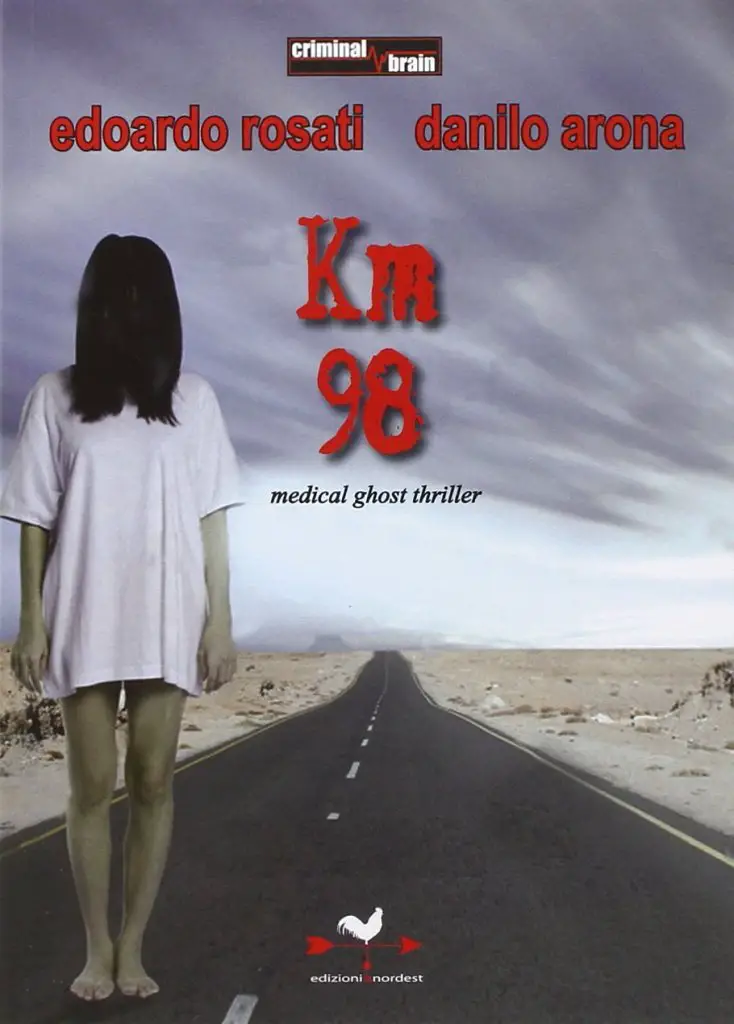
Similarly to its real counterpart, Arona's alter ego in the novel investigates the mysterious story told by the site, but soon it intertwines with other and disturbing events that afflict Bassavilla and beyond. Two little girls are haunted by the spirit of Melissa the Bloody, bogeyman living in mirrors and which manifests itself with interference on VHS and puddles of water that appear out of nowhere. In Japan, there are collective suicides of young people who seem to be induced by a computer virus called just Melissa. Finally, the mysterious death of a girl from Bassavilla, who died in her bed at 5:20 am on 29 December 1999, with injuries compatible with being hit by a truck. A parade of disconcerting events held together by a single constant, the name "Melissa". As the protagonist's mentor explains:
« Why in Italy "Melissa"? My teacher, Quirino Calderone would have no doubts: "It is a name of power, like all those used in rituals. Vibrations that must be felt in the deepest of human abysses. Arcana nomination, voces misticae, spermatic logoi, mantra. Names only governed by the analogical law that are loaded over time for arcane purposes and occult modifications whose purpose is not given to us. Have you noticed how many Melisse have been distressed lately? The more there are, the more potent the name gets. »
A real psychic contagion, which finally turns out to have its primordial origin in the tragic death of Melissa Prigione, a young woman from Bassavilla who disappeared in 1925. This is the triggering event to which the other Melisses later "joined":
« With a real death at the beginning of the whole, as for sure there was a real death at the beginning, at the origin of the mystery of Melissa, a highly negative event that has kept and keeps the frequency of the entire global energy field very low. within which all the chain mechanism we have tried to describe operates: the consciousness of a creature, like Melissa Prison or Melissa George, who has abandoned her body by throwing herself into a river or ending up blasted on a highway in Virginia, and leaves the range of the five senses because suddenly she no longer has a body capable of operating in that frequency range. But quite simply has shifted to another frequency range - what we would call, so to speak, "demonic" or the low astral - from which he can interact with those who, casually or consciously, are able to move the mediumistic "radio knob" to tune in to it. And it is precisely the name of power that is the vibratory key that is causing this immense chain nightmare which kills and terrifies both in Japan and in Bassavilla. It is simply a name: a vibration. It doesn't matter who. The more Melisse there are, the more we are lost. »
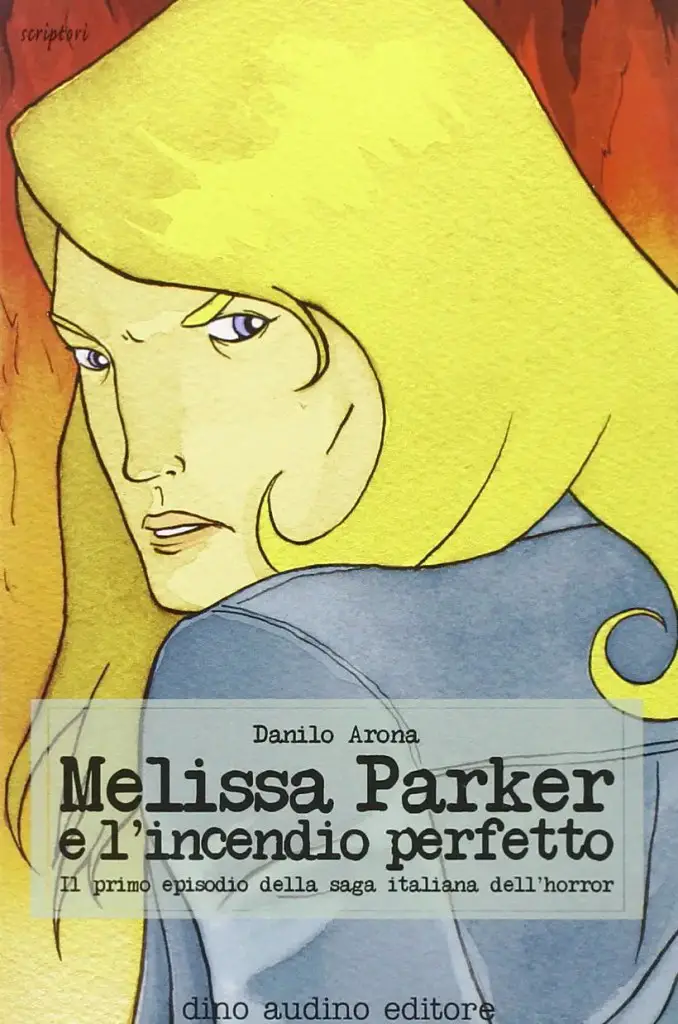
The only way to appease Melissa's vengeful spirit seems to be to find out the truth about her death and write a book about it. But caring for her will prove worse than the harm, as we discover in the sequel Melissa Parker and the perfect fire published in 2007. In this new novel the protagonist ascertains how the publication of a book on the story of Melissa has strengthened the entity giving rise to a new chain of tragic and inexplicable events:
« A book about Melissa can't come out. She would be multiplied a hundredfold, disseminated in this reality by anyone who reads it. She just wants to rest, to rest forever. Instead, if you circulate it, you will multiply it. She is going to be more and more dangerous, while she only needed to find out the truth about her death and keep it to yourself. »
At the center of the story there is Debra Shepherd, an English woman who has had a girl's ghost as an imaginary friend since she was a child, Melissa Parker, who died in a fire in her car when Debra was just a child. Debra has since exhibited pyrokinetic powers that she cannot control. And she is not the only one, since by investigating our protagonist she will discover other cases in which individuals capable of causing flames out of nowhere manifest unequivocal symptoms of possession by an entity that calls itself Melissa. A psychic epidemic, whose viral vector are also the media, both the internet and the more traditional ones such as films and books, for example the novel The Arsonist starring a girl with pyrokinetic powers named Melissa:
"Of course. They began with the spread of the Melissa virus online. People who killed themselves would leave farewell notes written on them Melissa killer worm. There have been waves until 2004. "
“It's not quite right,” says Father Simon. “They come back again. But they don't even make the news anymore. Especially since suicides don't write anymore Melissa killer worm. Now they write fire walks with me."
“Come on! That's a movie title! "
“Contemporary media, in fact. How The Arsonist by Herbert James, both the book and the film! "
"Of course!" Quirino gasped. “These are the real faces of the Prism. Your book is the indisputable proof of this. Books, films, articles ... everything that hooks on to its essence is repeated, so to speak, in the universal medatic circuit that feeds it and multiplies it endlessly. "
Melissa is in effect a meme, in the sense in which they were theorized by the scientist Richard Dawkins in his seminal essay The Selfish Gene: an idea able to spread from one brain to another thanks to cultural artifacts and to survive the death of its host by replicating itself in a way not unlike what genes do. It is from this ability to propagate that the entity Melissa derives its ability to manifest itself in the world, a characteristic that assimilates it to tulpa of the Tibetan tradition:
"Tulpa is a word referring to those immaterial entities that are transformed into physical reality through the act and will of the imagination. The magicians of Tibet argue that the transition from form or from self-induced hallucination (actually tangible) is possible only behind a strong motivation of the one who creates the Tulpa, which must be followed by an intense process of concentration and visualization. But certain precautions must be followed, because the cancellation of a Tulpa it can be much more difficult than creating it. »

Memetic contagion
As we have seen, the idea that certain thought-forms can materialize in reality it is a central idea in Arona's work, and it can be said that Melissa has materialized in our reality, at least metaphorically. From the publication of Chronicles of Bassavilla several newspapers and books have relaunched the story of Melissa as a "real" urban legend; in 2005 among the truck drivers who passed on the Bologna-Padua it was told of the ghost of a woman that tormented those who stopped at a service station near the fateful km 98. In short, as Arona himself had prophesied in his books, the contagion has spread, and the meme of Melissa became real. But, in the vanishing universe of folklore, what can be said to be real and what not? We leave you with this question and with the words of Danilo Arona:
« Or, we are always here, on the border. The boundary between the true and the false, between the believed true and the (consensual) hallucination. Between Reality and Ghosts. That is, everything that nourishes the contemporary gothic. Why archetypes - i vampires above all - they have been confined to the harmless “romantic dark” enclosure, where imagination and marketing do not pose problems of space. And because today, for authentic fear, an ambiguous additional datum is needed: the possible existence of a dimension interfaced with ours in which to express a different and additional "perception". [...] Final question: What is reality? What is a ghost? What does the oxymoron mean "true contemporary ghost"? »
REFERENCES
Popular Horror Almanac curated by Fabio Camilletti and Fabrizio Foni
All Stories, Italian Imaginary and Contemporary Legends by Danilo Arona
Media possession by Danilo Arona
The Shadow of the Winged God by Danilo Arona
Chronicles of Bassavilla by Danilo Arona
Melissa Parker and the Perfect Fire by Danilo Arona

A comment on "The "memetic contagion" in the metropolitan folklore of Danilo Arona"